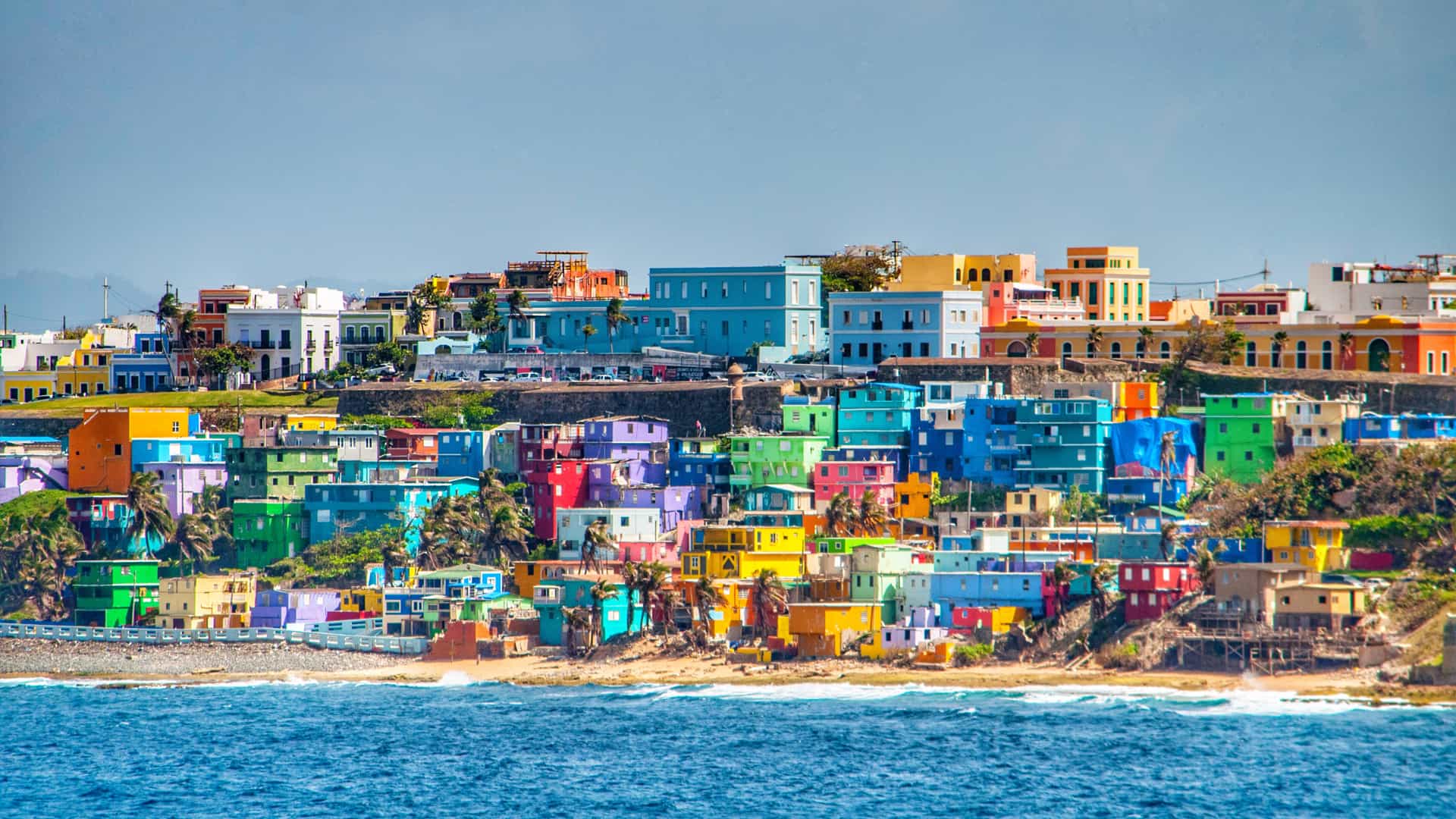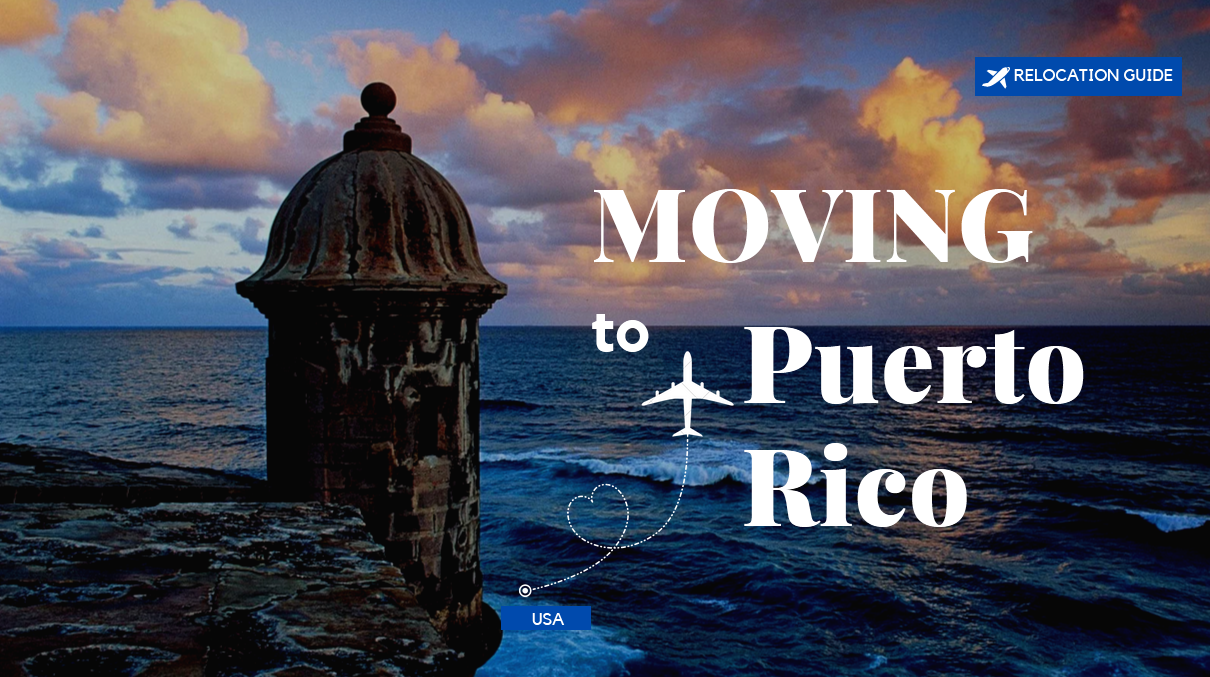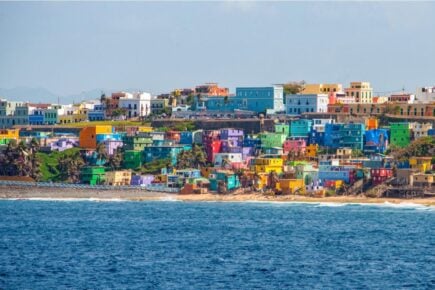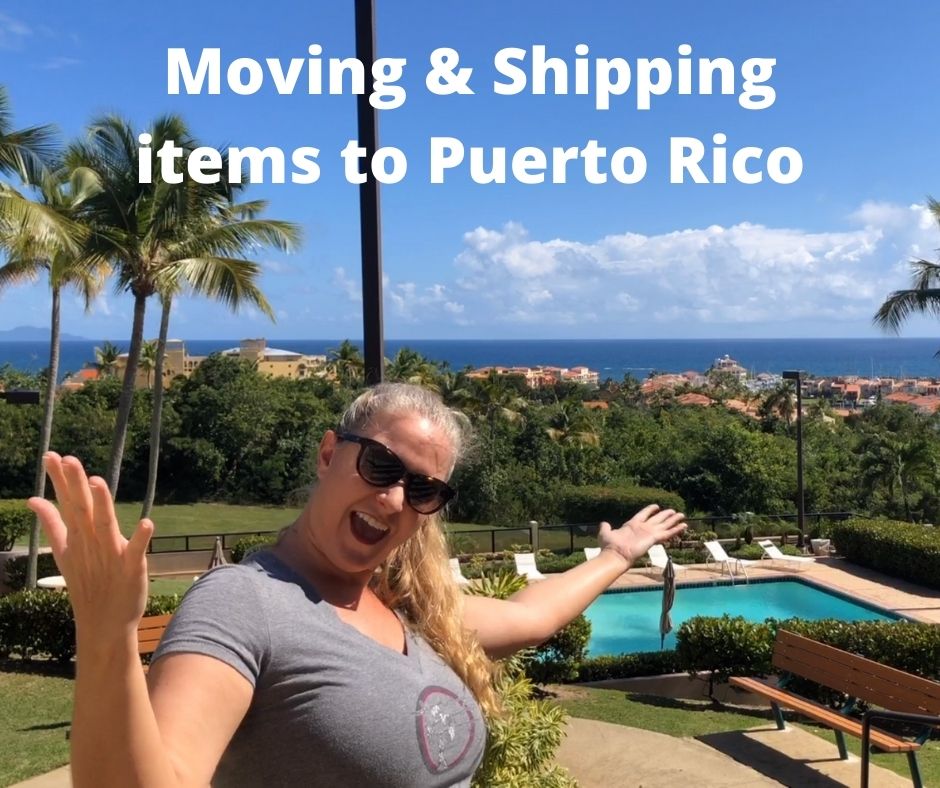Moving From Miami To Puerto Rico
As the vibrant city of Miami begins to feel suffocating, many individuals are seeking a fresh start on the sun-kissed shores of Puerto Rico. The allure of this US territory in the northeastern Caribbean is undeniable, with its rich cultural heritage, stunning natural beauty, and relaxed island pace. But making the move from Miami to Puerto Rico requires careful consideration of the distinct lifestyle, cost of living, and logistical differences between the two destinations. This article will guide you through the essential factors to weigh when contemplating a move from Miami to Puerto Rico, ensuring a seamless transition to your new island home.

Making the Leap: What to Expect When Moving from Miami to Puerto Rico
Moving from Miami to Puerto Rico can be an exciting adventure, but it requires careful planning and consideration of the many factors that will impact your transition. Here are some key aspects to think about as you prepare for your move.
Understanding the Cost of Living
One of the most significant differences you'll encounter when moving from Miami to Puerto Rico is the cost of living. Puerto Rico has a lower cost of living compared to Miami, with lower housing costs, taxes, and overall expenses. However, this also means that salaries are generally lower, so it's essential to factor this into your budget. Be prepared to adjust your spending habits and explore ways to make the most of your money.
Job Opportunities and Career Growth
Puerto Rico's economy has faced challenges in recent years, but there are still many job opportunities available, particularly in industries like tourism, healthcare, and technology. However, it's crucial to research the job market in your field and consider the potential for career growth. You may need to be flexible and open to new opportunities or consider freelancing or entrepreneurship.
Language and Cultural Differences
While many Puerto Ricans speak English, Spanish is the predominant language, and you may encounter some language barriers. Additionally, there may be cultural differences that take some getting used to, such as the more relaxed pace of life and strong family ties. Be prepared to be patient, learn some Spanish phrases, and immerse yourself in the local culture.
Housing and Neighborhoods
Finding the right housing in Puerto Rico can take time, especially if you're looking for a specific type of accommodation or location. Research different neighborhoods, such as San Juan, Condado, or Old San Juan, and consider factors like safety, proximity to work, and access to amenities.
Logistics and Transportation
When moving to Puerto Rico, you'll need to consider the logistics of transportation, including importing your car or buying a new one, as well as navigating the island's roads. Additionally, you'll need to arrange for shipping your belongings and potentially storing some items.
| Category | Miami | Puerto Rico |
|---|---|---|
| Cost of Living | High MetaData | Low MetaData |
| Job Opportunities | Plentiful | Limited, but growing |
| Language | English predominant | Spanish predominant, some English |
| Housing | Expensive, competitive market | Affordable, but limited options |
| Transportation | Well-developed infrastructure | Improving infrastructure, some challenges |
Cost of Living, Job Opportunities, Language, Housing, and Transportation are just a few of the key factors to consider when moving from Miami to Puerto Rico. By understanding these differences, you can better prepare yourself for a successful transition.
Is moving to Puerto Rico a good idea?

Moving to Puerto Rico can be a good idea for some people, but it's essential to weigh the pros and cons before making a decision. Here are some factors to consider:
Pros of Moving to Puerto Rico
Puerto Rico offers a unique blend of American and Latin American cultures, beautiful beaches, and a tropical climate. Some of the benefits of moving to Puerto Rico include:
- Tax incentives: Puerto Rico offers Act 20 and Act 22, which provide significant tax breaks for eligible individuals and businesses.
- Affordable cost of living: The cost of living in Puerto Rico is generally lower compared to many states in the US mainland.
- Bilingual community: Puerto Rico is a bilingual island, where both English and Spanish are widely spoken, making it an attractive destination for those who want to learn or practice their Spanish skills.
Cons of Moving to Puerto Rico
While Puerto Rico has its advantages, there are also some drawbacks to consider:
- Economic challenges: Puerto Rico is still recovering from a decade-long economic recession and a debt crisis, which can impact job opportunities and infrastructure.
- Infrastructure limitations: Puerto Rico's infrastructure, including roads and utilities, can be limited in some areas, especially outside of San Juan.
- Natural disaster risks: Puerto Rico is prone to natural disasters, such as hurricanes, earthquakes, and floods, which can be a concern for those moving to the island.
Things to Consider Before Moving to Puerto Rico
Before making the move, it's essential to research and consider the following:
- Research neighborhoods: Look into different neighborhoods and areas to find the best fit for your lifestyle and budget.
- Understand the job market: If you're planning to work on the island, research the job market and opportunities in your field.
- Plan for healthcare: Puerto Rico has a unique healthcare system, and it's essential to understand how it works and what options are available.
Can a US citizen just move to Puerto Rico?

A US citizen can indeed move to Puerto Rico, as it is a US territory. As a US citizen, you do not need a visa or a passport to enter Puerto Rico. However, there are some things to consider before making the move.
Why Move to Puerto Rico?
Puerto Rico offers several advantages for US citizens. For one, you won't need to worry about obtaining a visa or dealing with immigration issues. Additionally, you'll still be able to vote in US presidential elections and maintain your US citizenship. Puerto Rico also offers a unique cultural experience, blending Spanish and American influences.
Tax Incentives in Puerto Rico
One of the main draws for US citizens moving to Puerto Rico is the tax incentives. Under Act 20/22, also known as the Puerto Rico Tax Incentives Act, certain individuals can enjoy significant tax breaks. These include:
- Zero capital gains tax: You won't pay capital gains tax on profits from investments.
- Dividend tax exemption: You won't pay taxes on dividends from Puerto Rico-sourced income.
- Low corporate tax rate: Businesses can enjoy a reduced corporate tax rate of 4%.
Things to Consider Before Moving
While moving to Puerto Rico can be an attractive option, there are some things to consider. These include:
- Language barriers: While many Puerto Ricans speak English, Spanish is the predominant language, and you may need to learn some Spanish to fully integrate.
- Cultural differences: Puerto Rico has a unique culture that may differ from what you're used to in the US mainland.
- Hurricane risk: Puerto Rico is prone to hurricanes, which can cause significant damage and disruptions.
How much money do I need to move to Puerto Rico?

The cost of moving to Puerto Rico can vary greatly depending on several factors such as lifestyle, location, and personal preferences. However, here are some general guidelines to help you estimate how much money you may need to move to Puerto Rico:
Initial Moving Costs
The initial moving costs can range from $2,000 to $10,000 or more, depending on the distance of your move, the size of your household, and the type of moving services you require. Here are some estimated costs to consider:
- Shipping costs: $2,000 to $5,000 for a small household, $5,000 to $10,000 for a medium-sized household, and $10,000 or more for a large household.
- Flights and accommodations: $500 to $2,000 for flights and temporary accommodations for you and your family.
- <strong|Rental or purchase of a home: $1,000 to $5,000 for a security deposit, first month's rent, and other expenses related to renting or buying a home.
Living Expenses
The cost of living in Puerto Rico can vary depending on your lifestyle and personal preferences. However, here are some estimated monthly living expenses to consider:
- Rent: $800 to $2,000 per month for a one-bedroom apartment, $1,200 to $3,000 per month for a two-bedroom apartment, and $2,000 to $5,000 per month for a three-bedroom apartment.
- Food and groceries: $500 to $1,000 per month for basic food and groceries.
- Transportation: $200 to $500 per month for a car payment, insurance, gas, and maintenance, or $50 to $100 per month for public transportation.
Ongoing Expenses
In addition to your initial moving costs and living expenses, there are several ongoing expenses to consider when moving to Puerto Rico. Here are some estimated monthly costs:
- Utilities: $150 to $300 per month for electricity, water, gas, and internet.
- Health insurance: $300 to $600 per month for a basic health insurance plan.
- Taxes: 10% to 20% of your income, depending on your tax bracket and residency status.
How do I move my belongings to Puerto Rico?

Moving to Puerto Rico: A Comprehensive Guide
Moving to Puerto Rico can be an exciting adventure, but it requires careful planning and execution. One of the most critical aspects of relocation is transporting your belongings to the island. Here's a step-by-step guide to help you move your belongings to Puerto Rico:
Choosing the Right Shipping Method
There are several shipping methods to choose from, depending on your budget, time constraints, and the type of items you're moving. Here are some options to consider:
Ocean Freight vs. Air Freight
When it comes to shipping your belongings to Puerto Rico, you'll need to decide between ocean freight and air freight. Ocean freight is a cost-effective option for large or heavy shipments, but it can take several weeks to arrive. Air freight, on the other hand, is faster but more expensive. Consider the following factors to make an informed decision:
- Volume and weight: If you have a large number of items or heavy furniture, ocean freight might be more suitable.
- Time sensitivity: If you need your belongings quickly, air freight is a better option.
- Budget: Compare the costs of both options and choose the one that fits your budget.
Hiring a Reputable Mover
Working with a reputable moving company can simplify the process and reduce stress. Here are some tips to find a reliable mover:
- Research: Look for movers with experience in international relocations and check their reviews.
- Get quotes: Compare prices and services from different movers.
- Verify licenses: Ensure the mover has the necessary licenses and certifications.
Packing and Preparation
Proper packing and preparation are crucial to ensure your belongings arrive safely in Puerto Rico. Here are some tips to get you started:
- Start early: Begin packing non-essential items weeks in advance to avoid last-minute chaos.
- Use sturdy boxes: Invest in high-quality boxes and packing materials to protect your belongings.
- Label and inventory: Clearly label each box and create an inventory list to keep track of your items.
FAQ
What are the main differences between living in Miami and Puerto Rico?
When considering a move from Miami to Puerto Rico, it's essential to understand the significant differences between these two destinations. Culture is a significant factor, as Puerto Rico is a US territory with a rich Hispanic heritage, whereas Miami is a melting pot of cultures. Language is another key difference, as Spanish is the predominant language spoken in Puerto Rico, whereas English is more widely spoken in Miami. Additionally, cost of living varies greatly, with Puerto Rico generally being more affordable than Miami. Job opportunities also differ, with Miami being a hub for international business and finance, while Puerto Rico's economy is more focused on tourism and manufacturing.
Shipping your belongings to Puerto Rico can be a complex process, but with proper planning, it can be a smooth transition. Research is key, as you'll need to find a reputable shipping company that specializes in international moves. Be sure to get quotes from multiple companies and carefully review their services and pricing. You'll also need to prepare your items for shipping, which may involve packing, labeling, and documenting your belongings. Additionally, consider duties and taxes that may apply to your shipment, as Puerto Rico has specific regulations regarding imports.
What are the most popular neighborhoods for expats in Puerto Rico?
Puerto Rico offers a range of neighborhoods that are popular among expats, each with its unique character and advantages. Old San Juan is a favorite among those who appreciate the island's rich history and culture, with its colorful buildings, narrow streets, and vibrant nightlife. Condado is another popular area, known for its beautiful beaches, upscale shopping, and diverse dining options. Luquillo is a more laid-back neighborhood, famous for its stunning beach and delicious food kiosks. Río Piedras is a popular area for families, with its tranquil atmosphere, good schools, and easy access to San Juan.
What are the requirements for obtaining health insurance in Puerto Rico?
Obtaining health insurance in Puerto Rico is crucial, as medical care can be costly without proper coverage. US citizens are eligible for Medicare and Medicaid, while non-US citizens may need to purchase private insurance. Group health plans are available through employers, while individual plans can be purchased directly from insurance providers. Be sure to research and compare plans carefully, considering factors such as premium costs, deductibles, and coverage levels. Additionally, pre-existing conditions may affect your eligibility and premium rates.